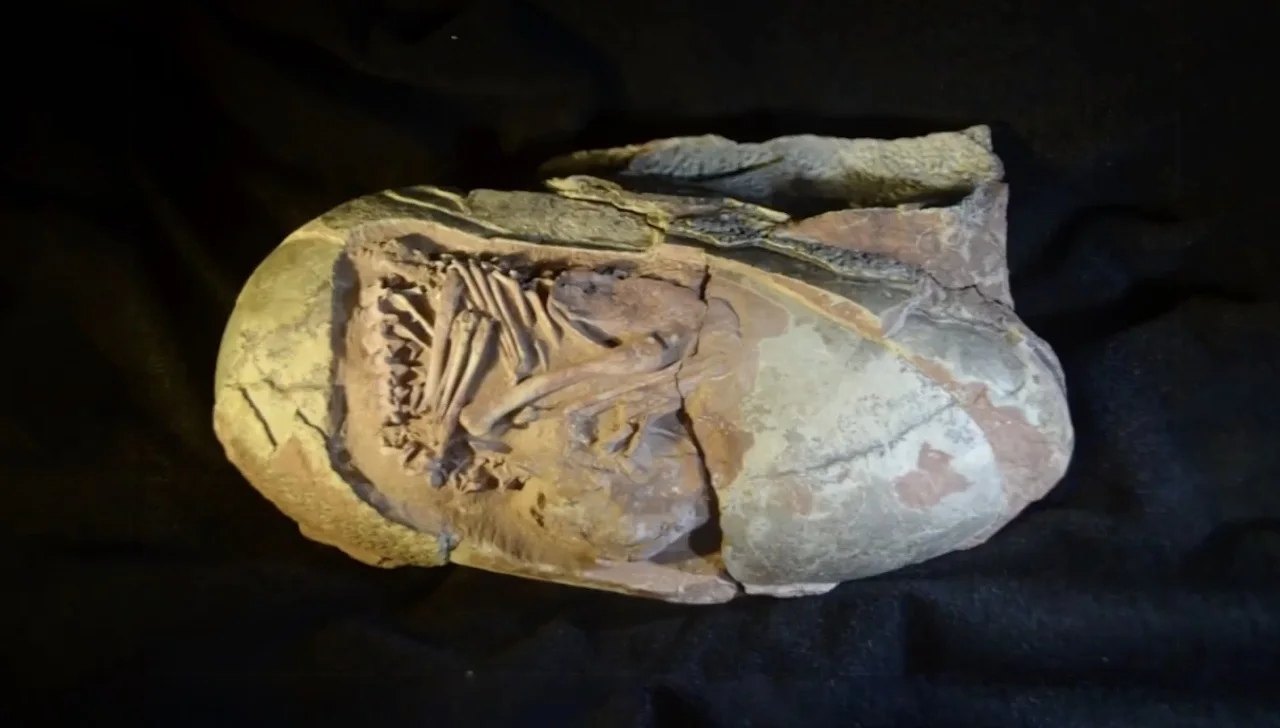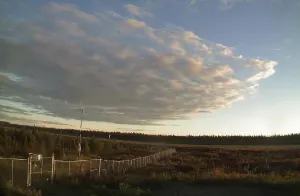
Fossil of baby dinosaur preserved in egg astounds science community
The fossil, thought to be up to 72 million years old, maintains the embryonic skeleton of an oviraptorid dinosaur -- given the moniker of Baby Yingliang after the Chinese museum that stores it.
The connection between birds and dinosaurs isn't groundbreaking, but the recent discovery of a fossil with a perfectly intact embryo has the scientific community reeling with excitement as it sheds even more light on the link.
The finding of a fossil, believed to be up to 72 million years old, maintains the embryonic skeleton of an oviraptorid dinosaur -- given the moniker of Baby Yingliang after the Chinese museum that stores it.
SEE ALSO: Dinosaur bone bigger than a human being unearthed in France
According to Darla Zelenitsky, an associate professor in the geoscience department at the University of Calgary, baby dinosaur bones are tiny and fragile, and very rarely kept intact as fossils, making it a fortunate discovery.
"It is an amazing specimen...I have been working on dinosaur eggs for 25 years and have yet to see anything like it," Zelenitsky told CNN through email. "Up until now, little has been known of what was going on inside a dinosaur's egg prior to hatching, as there are so few embryonic skeletons, particularly those that are complete and preserved in a life pose."
The egg measures about 17 centimetres length-wise, while the embryo was gauged to be about 27 centimetres from head to tail. It is suspected, according to researchers, that if it were to have lived as an adult, it would have grown to a three-metre span.

(Yingliang Stone Nature History Museum/Storyful)
DINOSAURS FOUND TO SHIFT AND CHANGE POSITIONS BEFORE HATCHING
Similar to infant birds, it was noted by scientists from China, the United Kingdom in Canada that inside the eggs the dinosaurs shifted and switched poses before they hatched. The team determined the link after studying the positions of Baby Yingliang and other discovered oviraptorid embryos.
Movements in present-day birds are affiliated with a behaviour known as tucking, managed by the central nervous system and is key for the success of hatching.
"Dinosaur embryos are some of the rarest fossils. Most of them are incomplete with the bones dislocated. We are very excited about the discovery of Baby Yingliang. It is preserved in a great condition that we could answer a lot of questions about dinosaur growth and reproduction with it," Fion Waisum Ma, lead author of the study and a researcher at the University of Birmingham, U.K., said in a statement.
BIRDS EVOLVED FROM TWO-LEGGED DINOSAURS
Birds directly developed from a batch of two-legged dinosaurs, theropods, whose species include the Tyrannosaurus rex and smaller velociraptors.

(Yingliang Stone Nature History Museum/Storyful)
The behaviour that has been observed prior to hatching isn't the only trait modern birds derived from the dinosaur predecessors. The same breed of dinosaurs were also perched atop of their eggs to fertilize them in a similar fashion as birds, Zelenitsky, a co-author of the research that was published in the journal iScience on Tuesday, said.
“Because oviraptorids belong to a larger group of dinosaurs that ultimately gave rise to birds, this behaviour of taking on various positions prior to hatching is no longer unique to living birds,” said Zelenitsky, in a news release.
The fossil was located in China's Jiangxi province and bought in 2000 by Liang Liu, director of Yingliang Group. It found its way to storage, mostly ignored until about 10 years later, when museum staff sifted through the boxes and uncovered it during the building of the Yingliang Stone Nature History Museum.
The uncovering of other well-maintained embryos is expected by scientists in the future so their suggestions can be examined more for these and other dinosaurs.
Thumbnail courtesy of Yingliang Stone Nature History Museum/Storyful.
Follow Nathan Howes on Twitter.










